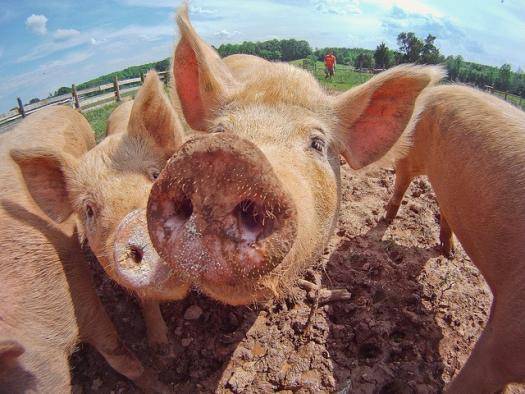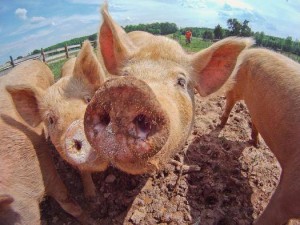May 7, 2014 – J. Craig Venter, the American biologist who first sequenced the human genome more than a decade ago, who created synthetic life in 2010, and who is constructing pharmaceuticals and vaccines through chemical synthesis and genomics, is off on a new quest to genetically alter organs from other animals for use in human transplant surgery. Known as xenografts, organs such as lungs, hearts and kidneys from other mammals could provide transplant candidates with viable organs as suitable as those available from human donors.
In collaboration with United Therapeutics, a biotechnology company, headquartered in Maryland, Venter’s company, Synthetic Genomics, intends to make xenotransplantation a common occurrence in hospitals helping thousands who die every year before getting a suitable transplantable human organ because of donor shortages.
What’s involved? Altering pig tissue to make it human compatible. Venter believes 50 genetic modifications should do the trick. That’s because 90% of all mammals share a common set of DNA. By accurately sequencing pig DNA Venter intends to produce a roadmap for creating genetic modifications. His researchers will then rewrite the genome to match it to humans. The altered genome will then be transplanted into pig ova and embryos will develop into into adult pigs with human transplantable organs.
The timeline? Venter believes the first stage should take only a few years, certainly less than a decade. Following that there will have to be clinical trials with end-stage recipient human volunteers to ensure the xenografts remain viable for a number of years. After that humanized pig lungs, hearts and kidneys may become the standard for transplant surgery.
Sounds like science fiction? It’s not. At the 94th meeting of the American Association for Thoracic Surgery held this last week in Toronto, a team of researchers reported on the successful grafting of a genetically-altered pig heart into a baboon. The heart, placed in the baboon’s abdomen, supplemented the animal’s own heart and has thrived for better than a year.
But what about developing a heart from human stem cells? Wouldn’t that be a better strategy since the heart would be an exact match to the recipient and would not require the use of immunosuppressive drugs? Although I have reported in this blog many advances in stem cell technology scientists believe we still have a long way to go to build an entire organ and do it in a reasonable time frame to use in transplant surgery.
To give you a sense of the importance of developing compatible xenografts, in the United States today 400,000 people die from lung disease annually. Only 2,000 receive lung transplants and 2,000 more are added to the transplant list every year. For most of them pigs like the ones shown below (photo by Lance Cheung, U.S. Department of Agriculture) could save thousands of human lives.




















